The Babbling Stage in Childhood Language Acquisition
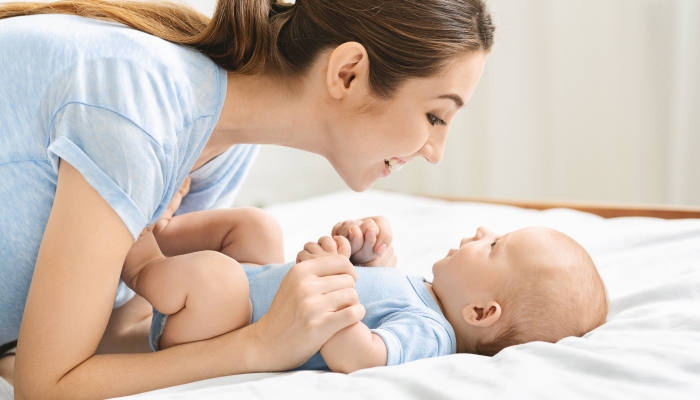
- The babbling stage is important for your child’s speech and language development.
- Babbling involves adding consonants to vowels when communicating.
- As babies grow, babbling progresses. These different stages will eventually lead to your baby’s first words.
- As a parent, you play an important role in encouraging your child to babble. There are different techniques you can use to help your child babble more.
- If your infant isn’t using a voice to communicate, talk with your pediatrician as soon as possible. Early intervention is crucial.
Before your child begins talking with words, she expresses herself and communicates through oohs, gahs, babas, or other nonsensical sounds.
As a parent, you may eagerly look forward to the day you hear “mamama” or “dadada.” Of course, it feels good when your baby starts to repeat these words and babble. But did you know babbling is an important milestone in your child’s language development?
There are different types of babbles that babies learn to express, with each type building upon the other to help your child’s language development.
The babbling stage is one way your baby learns to communicate with you and is essential for your baby’s language development. As a parent, you play an important role in encouraging your baby to babble.
The Babbling Stage: What You Should Know
As an infant, your baby begins the first stage of communication through crying. These cries eventually evolve into coos, laughs, and giggles before turning into the babbling stage.
Most children, including hard of hearing and deaf infants, will cry, coo, and begin to babble.
The babbling stage is the second stage in childhood speech development. During this stage, an infant starts experimenting with different sounds. Unlike the vowel sounds of infant coos, the babbling stage combines consonants with vowels.
The babbling stage is more than just sounds. During this stage, your child is communicating with you but isn’t yet producing recognizable words. Babies will babble using the sounds they hear but aren’t able to mimic words yet. Children are beginning to learn the structure of language too.
Deaf children exposed to sign language at a very young age will begin to manual babble through gestures. According to psychologists Laura Ann Petitto and Paula F. Marentette, manual babbling is similar to vocal babbling for hearing children. Both babbling styles serve an important function in building the learning structure of language.
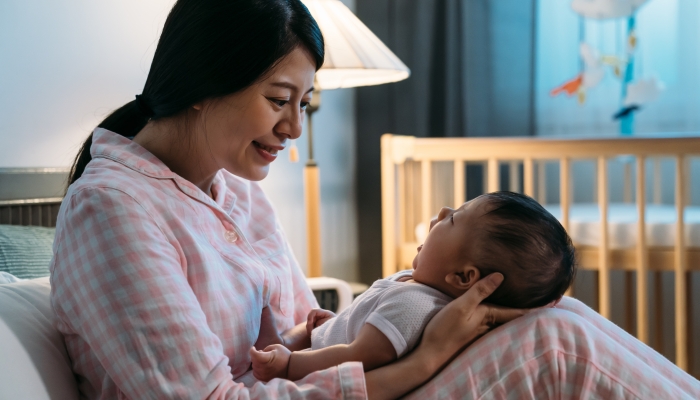
What Are The Different Types of Babbling?
Marginal Babbling
Initially, your baby will begin marginal babbling or pre-canonical babbling. This means your infant will start adding constants to vowels. Examples include “Ma,” “Ba,” “Da,” or “Um.”
Canonical Babbling
Around 6-10 months, your baby may start a more repetitive babbling called canonical babbling. The canonical babbling stage includes:
- Reduplicated Babbling: The baby repeats the same syllable, such as “dadadada.”
- Non-Reduplicated Babbling or Variegated Babbling: The baby uses varied babbles such as “magaga” or “googoomee.”
Conversational Babbling
Near 10 months, babies begin conversational babbling. This type of babbling appears more like a conversation where the child pauses for a response and takes turns in communication. There seems to be more of a rhythm in the communication.
How Important Is The Babbling Stage for Childhood Language Acquisition?
Babbling is the first step toward your child saying his first words. It is significant in a baby’s speech development and an early stage of language development.
When babbling, a baby is learning how to manipulate speech sounds. Your child is also learning how to move their lips and tongue to form different sounds and how to control their voice. Your child will start to engage in vocal play, raising the pitch and volume of their babbles. These language skills build the foundation for a child to form words.
When Do Babies Start Babbling?
Around 3 to 6 months, babies start introducing simple speech sounds. The combination of consonants and vowels marks the beginning of the babbling stage.
Since babbling is the foundation of language acquisition, delays in canonical babbling sometimes predict delays in speech or later learning disabilities.
For typically developing infants, babbling transitions to first words around 12 months; by 15-21 months, an average child will have around 20 words.
The Five Stages of Babbling
From marginal babbling to conversational babbling, speech professionals commonly break down babbling into five different stages. Each stage builds upon the other, eventually leading to a child’s first word.
1. Reflexive Vocalization or Pre-Talking Stage: 0-2 Months
During this stage, babies communicate through crying. A young infant is unable to create complicated speech sounds due to a small vocal tract that is still maturing. Toward the end of this stage, infants begin cooing, which is considered the baby’s first sound production beyond crying.
2. Simple Speech Sounds: 3-4 Months
Around 3-4 months of age, most babies begin to incorporate simple consonants with vowels. They begin making sounds such as “goo gah.” Crying becomes more distinct to indicate hunger, discomfort, or anger. Infants begin to interact more with their caregivers. This is the beginning of social skill development.
3. Expansion Stage or Single Syllable Speech: 5 Months
During this stage, infants practice adding more consonants to their speech, such as “ba, da, ma.” Infants begin to experiment with pitch and intensity. It is common to hear your baby squealing, yelling, growling, laughing, or trying to whisper.
4. Canonical Babbling or Reduplicated Babbling Stage: 6-7 Months
Children begin to repeat the same syllable, such as “ba-ba” or “da-da.” Babies imitate what they hear and begin to master commonly heard sounds.
5. Variegated Babbling Stage: 8-12 Months
In this final stage of babbling, babies produce more complicated speech that appears like sentences. Mimicking adult speech, young children may sound like they are asking a question but without actual words. Consonant vowel combinations become more complex in this stage, eventually leading to a few simple words.
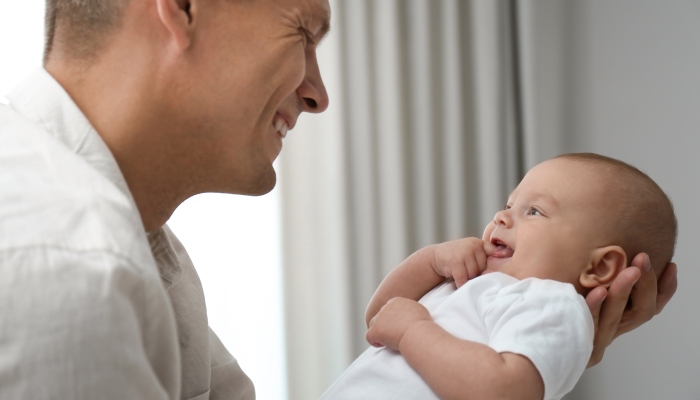
6 Ways To Encourage Your Baby To Babble
Most normally developing infants will create babbling sounds naturally. However, parents play a key part in encouraging an infant to babble. Since babbling is important for child development, parents can help with speech production.
1. Get Face to Face
If you get eye to eye with your infant and smile, they smile back. Try sticking your tongue out, and they will likely mimic you. Infants imitate what they see due to mirror neurons in their brains. When talking with your infant, make sure they can see how your mouth is moving.
2. Talk in Sing-Song
Babies can focus on you better when you speak in an expressive, higher-pitched voice. This sing-song approach, called parentese, will encourage your child to focus on your words. Make sure to use real words when talking.
3. Babble With Your Child
Take the time to babble with your child a few times every day. In your expressive sing-song voice, say “mamamama or babababa” and see if your child babbles back. When they do, show excitement and encourage the back-and-forth conversation. Once your baby is engaged, add real words to your interaction.
4. Pause And Don’t Interrupt
Give your baby time to respond to you by pausing after talking. When your child begins to babble, don’t interrupt. Babies learn from also hearing themselves make noise. This is a great way to teach your child reciprocal conversation skills. Show you are listening by nodding, smiling, and making eye contact instead of talking.
5. Have a Conversation
When your baby starts babbling, try to respond meaningfully. Ask your baby questions, and when they babble back, respond as if you understood them. Have a conversation with your young infant and child as much as possible. You can encourage interactions through fun kids songs, reading, or just asking lots of different questions throughout your day.
6. Healthy Eating
When it is age-appropriate, introduce the correct solid foods. The same oral muscles your baby uses to eat are used to speak. Children are learning how to utilize their mouth muscles for eating, which in turn will help with speech development. Oral motor skills are important for speech development.
What If My Baby Isn’t Babbling Yet?
If your infant isn’t using his voice when you try to communicate, speak with your pediatrician as soon as possible.
Several factors could delay babbling, including:
- Hearing impairments
- Communication delays
- Developmental disorders
- Neurological impairments
Early intervention can make a huge difference in speech and language outcomes.
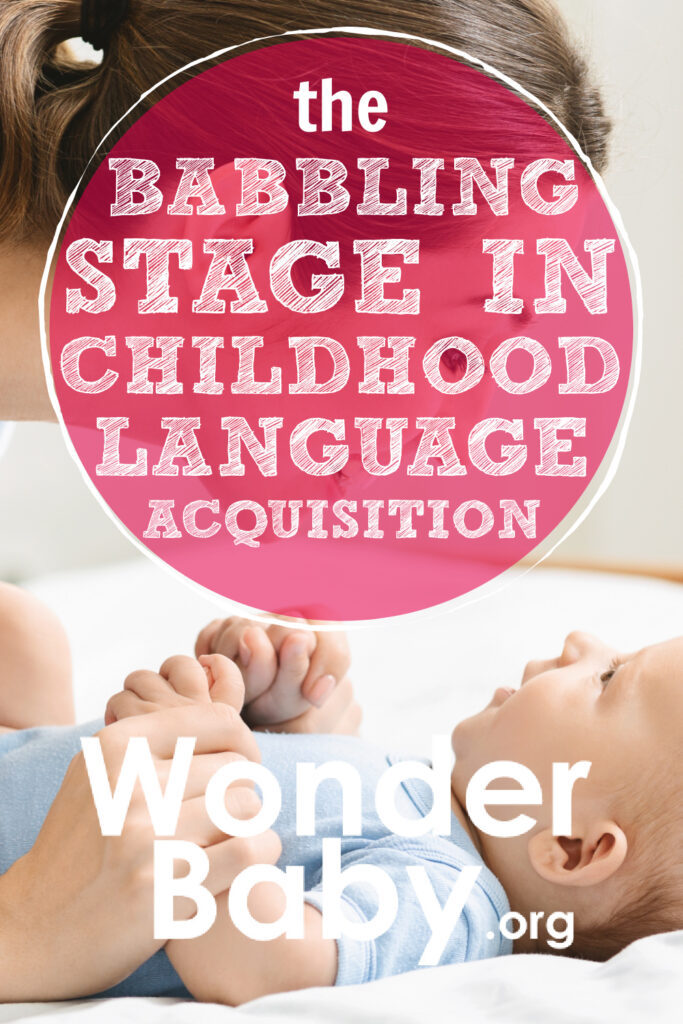
Related Posts
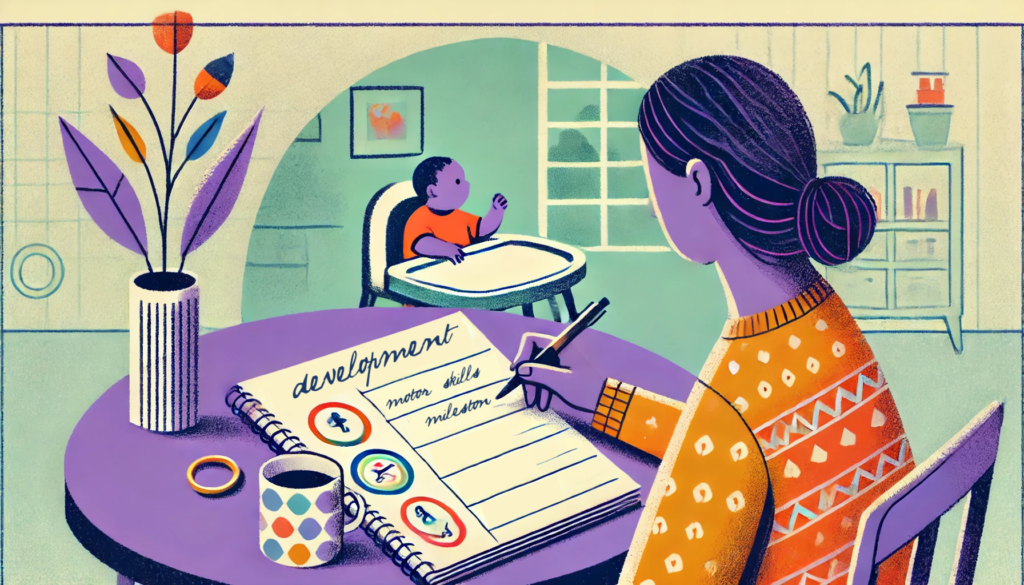
Development, Special Needs
How to Track Milestones for Developmentally Delayed Babies
Parents of developmentally delayed babies can explore practical tools and strategies to track milestones, celebrate progress, and support their child’s unique developmental journey.

Fine and Gross Motor
5 Alternatives to Tummy Time for Babies with Motor Development Challenges
Does your baby struggle with tummy time due to motor development challenges? These alternatives to tummy time will offer the same benefits.

Development
Should Twins Share a Room?
Wondering if your twins should share a room? We’ll explore the pros and cons of room-sharing for twins right here before you make your decision.